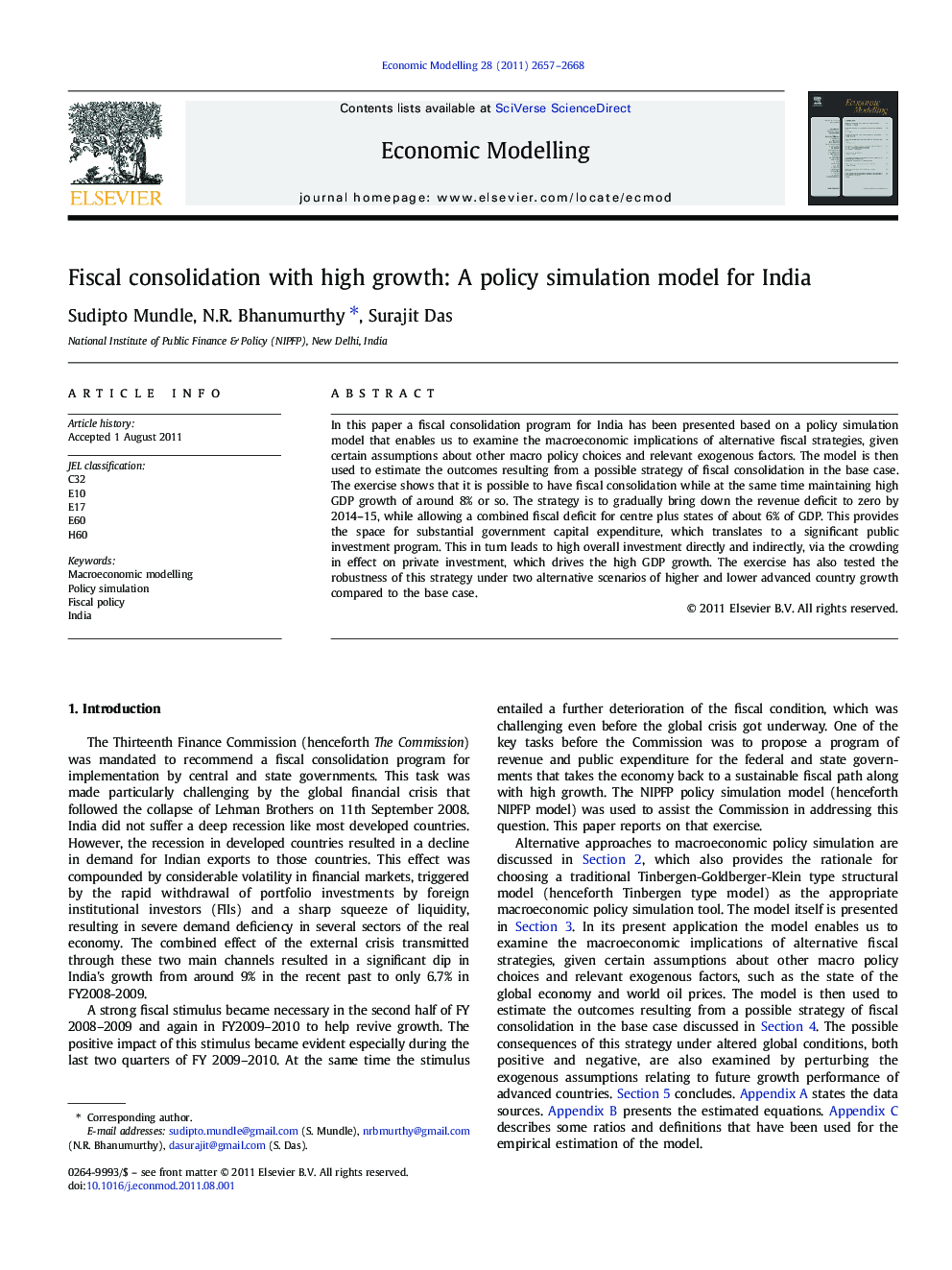| Article ID | Journal | Published Year | Pages | File Type |
|---|---|---|---|---|
| 5055396 | Economic Modelling | 2011 | 12 Pages |
In this paper a fiscal consolidation program for India has been presented based on a policy simulation model that enables us to examine the macroeconomic implications of alternative fiscal strategies, given certain assumptions about other macro policy choices and relevant exogenous factors. The model is then used to estimate the outcomes resulting from a possible strategy of fiscal consolidation in the base case. The exercise shows that it is possible to have fiscal consolidation while at the same time maintaining high GDP growth of around 8% or so. The strategy is to gradually bring down the revenue deficit to zero by 2014-15, while allowing a combined fiscal deficit for centre plus states of about 6% of GDP. This provides the space for substantial government capital expenditure, which translates to a significant public investment program. This in turn leads to high overall investment directly and indirectly, via the crowding in effect on private investment, which drives the high GDP growth. The exercise has also tested the robustness of this strategy under two alternative scenarios of higher and lower advanced country growth compared to the base case.
⺠Study examine macro consequences of 13th Finance Commission of India's fiscal targets. ⺠Structural model is used to examine fiscal deficit - growth trade-off. ⺠Reducing revenue deficit to zero ensures 6% and also the debt/GDP target of 68%. ⺠The study examines alternative scenarios to establish the robustness of the model.
